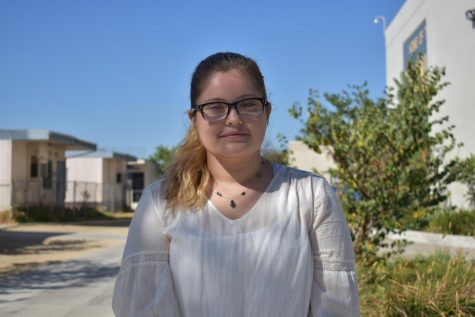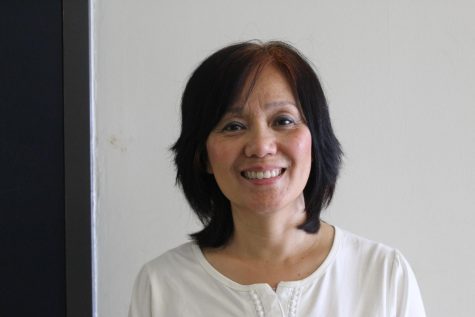Depression- It’s More Than Just a Sad Expression
Mental Illness Awareness Week is the second week of October. it is important to be informed about the different mental illnesses that exist and to reduce the stigma around them. One of the most stigmatized mental illnesses is depression; it’s prevalence and significance is often diminished and misunderstood.
***Trigger Warning: In this article, suicide and related topics will be mentioned.
***Important note: This article is solely informative. Any information or details discussed are not equivalent to a diagnosis. Consult your doctor or a mental healthcare specialist if you feel you might be suffering from any of these symptoms.
What is depression?
According to the American Psychiatric Association, depression is defined as an , “illness that negatively affects how you feel, the way you think and how you act.” The National Institute of Mental Health categorizes it as a mood disorder (in that same category are also bipolar disorder and several types of depression).
Are all the types of depression the same?
The short answer to this is no. Just like there are different types of diabetes, there are also different types of depression. The symptoms may be similar, but the main difference is the severity and frequency of said symptoms.
What are the different types of depression?
The most common form of depression is Major Depressive Disorder (MDD), also known as clinical depression. MDD impacts mood and behavior, as well as certain physical functions of a person, such as appetite and sleep. Individuals with MDD often lose interest in activities they previously indulged in and may experience difficulty performing everyday activities. Occasionally, people with MDD might also feel as if life isn’t worth living. To be diagnosed with MDD, a person must have five or more of the symptoms listed in the Diagnostic and Statistical Manual of Mental Disorders. These symptoms are:
- Feeling sad or irritable most of the day, nearly every day
- Showing less interest in activities that were once enjoyed
- Sudden weight gain or loss/ change in appetite
- Difficulties falling asleep or sleeping for prolonged periods of time
- Feelings of restlessness
- Feeling unusually tired or lacking energy
- Feeling worthless or guilty for things that wouldn’t normally cause guilt
- Difficulty concentrating, thinking, or making decisions
- Thoughts of self-harm or suicide
The exact cause of MDD is unknown, but there are several factors that impact a person’s likelihood of developing the condition. These factors include:
- alcohol/ drug abuse
- pre-existing medical conditions
- particular types of medications
- Biological differences
- Brain chemistry
- Hormones
- Inherited traits
Another form of depression is Persistent Depressive Disorder (also known as dysthymia). This type of depression is a chronic form of depression. It causes people to lose interest in daily activities and leads them to often feel hopeless and have low self-esteem. These feelings may last for years and significantly interfere with a person’s relationships, work, and day-to-day activities. With dysthymia, people may often be described as “gloomy” because they are incapable of having fun.
The symptoms for dysthymia are similar to those of Major Depressive Disorder. However, the symptoms for dysthymia are irregular and the intensity may increase progressively. Symptoms include:
- Lost of interest in daily activities
- Sadness or a feeling of emptiness
- Hopelessness
- Tiredness and lack of energy
- Low self-esteem
- Difficulty concentrating and making decisions
- Irritability or excessive anger
- Decreased activity and productivity
- Avoidance of social situations
- Poor appetite/ change in appetite
- Sleeping troubles
As with MDD, the exact cause for Persistent Depressive Disorder is unknown and the contributing factors are almost identical:
- Biological differences
- Brain chemistry
- Inherited traits
- Life events
A third type of depression is Seasonal Affective Disorder (SAD), which is a type of depression that comes and goes with the seasons. It typically begins in late fall/ early winter and goes away in spring and summer. SAD episodes are more common in the winter than in the summer, however.
To be diagnosed with SAD, a person must meet the criteria for major depression, as well as season-specific symptoms. The symptoms for the winter pattern of SAD are:
- Having low energy
- Hypersomnia
- overeating/ weight gain
- Craving for carbohydrates
- Social withdrawal (resemblant to hibernation)
The symptoms for the less-frequently occurring summer pattern of SAD are:
- Poor appetite associated with weight loss
- Insomnia
- Agitation
- Restlessness
- Anxiety
- Episodes of violent behavior
Similarly to the other two mentioned types of depression, the causes of SAD are unknown. Fortunately, research has found some biological clues that allow insight into possible causes and factors.
- Lack of serotonin (the neurotransmitter that contributes to feelings of well-being and happiness) in the brain
- Overproduction of melatonin (which regulates sleep)
- Decreased production of Vitamin D
A fourth type of depression is Postpartum Depression, which typically affects new mothers (and occasionally new fathers as well). Postpartum depression is not to be confused with the “baby blues,” which often only last two weeks after the birth of the baby.
Here are the comparisons in symptoms:
| Baby Blues | Postpartum depression |
| Mood swings
Anxiety Sadness Irritability Feeling overwhelmed Crying Reduced concentration Appetite problems Trouble sleeping |
Depressed mood or severe mood swings
Excessive crying Difficulty bonding with your baby Withdrawing from family and friends Loss of appetite or eating much more than usual Inability to sleep (insomnia) or sleeping too much Overwhelming fatigue or loss of energy Reduced interest and pleasure in activities you used to enjoy Intense irritability and anger Fear that you’re not a good mother Hopelessness Feelings of worthlessness, shame, guilt or inadequacy Diminished ability to think clearly, concentrate or make decisions Restlessness Severe anxiety and panic attacks Thoughts of harming yourself or your baby Recurrent thoughts of death or suicide |
Overall, there are different types of depression that although share similar symptoms, are definitely not the same in severity.
How can depression be diagnosed and treated?
*** Note: the following information is provided from medical research but does not necessarily apply to all individuals. This information is not a substitute for a proper diagnosis.
A doctor will often screen individuals for depression instead of simply conducting blood tests. By speaking directly with a patient, the doctor is able to identify possible symptoms in the person.
Depression is usually treated with medications ( including antidepressants, mood stabilizers and anti psychotic medications), psychotherapy( including cognitive behavioral therapy, family-focused therapy and interpersonal therapy), or a combination of the two. If these treatments do not reduce symptoms, electroconvulsive therapy (ECT) and other brain stimulation therapies may be options to explore.
Who is most affected by depression?
Depression affects women more than men. In men, it tends to manifest as tiredness, eligibility, and anger. In women, it manifests as sadness, worthlessness, and guilt. In younger children depression is more likely to manifest as school refusal, anxiety when separated from parents, and worry about parents dying. Depressed teenagers tend to be irritable, sulky, and get into trouble in school. In older adults depression may manifest more subtly as they tend to be less likely to admit to feelings of sadness or grief and medical illnesses which are more common in this population also contributes or causes the depression.
If you or anyone you know is/ might be suffering from depression, you are not alone. There are many people that are feeling like you and many people that want to help you. Here are some resources to refer to if you are in need of help. Please remember that if you are experiencing suicidal thoughts or are in a state of crisis, contact 911.
National Suicide Prevention Lifeline (NSPL),
-available 24 hours a day, every day
-1-800-273-TALK (8255)
The service is available to everyone.
*The deaf and hard of hearing can contact the Lifeline via TTY at 1-800-799-4889.
-All calls are confidential.
The Crisis Text Line
- free, confidential resource available 24 hours a day, seven days a week.
- Text “HOME” to 741741 and a trained crisis counselor will respond to you with support and information over text message.
- Visit www.crisistextline.org For more information
“Talk Life” App
- *Note: this app is not connected to mental health specialists; it is more of an anonymous, free resource to express how you are feeling and talk to other people in similar situations to yours
- Please be advised that this app is not a substitute for therapy in any way; it is merely a communication/ socialization app that allows users to share their thoughts and opinions in a safe environment
Sources:
https://www.nimh.nih.gov/health/topics/depression/index.shtml
https://www.nami.org/Learn-More/Mental-Health-Conditions/Depression
https://https://www.nimh.nih.gov/health/topics/seasonal-affective-disorder/index.shtml adaa.org/understanding-anxiety/depr
https://www.psychiatry.org/patients-families/depression/what-is-depression
Your donation will support the student journalists of Anaheim High School. Your contribution will allow us to purchase equipment and cover our annual website hosting costs.

Angela Gonzalez is a senior at Anaheim High School. She is a bilingual reporter and editor in Spanish. She has been enrolled in the Dual Language Academy...






